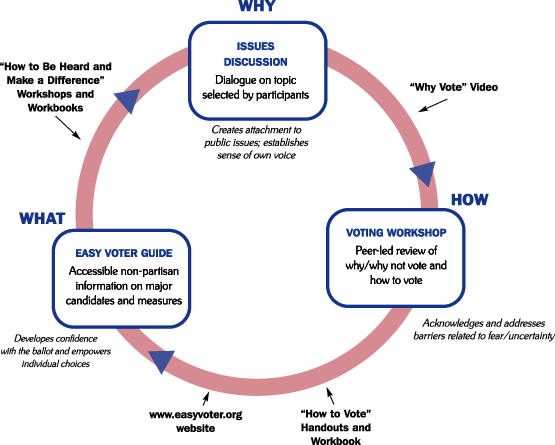There is an apathy myth about why people don't vote or get involved in their communities. It is widely reported that nonvoters are lazy and do not care. The number one reason people give in surveys as to why they don't vote is that they don't have time.
Our research looked deeper and found three main issues among most nonvoters:
- They don't see the relationship between politics and their own lives.
- They perceive the voting process as being difficult, like taking a test.
- They do not get any social reinforcement about voting from their friends and family.
The most important predictor of whether 18–30 year olds vote is if they grew up in a household with voters. But we have the ability to motivate and educate those who did not have this civic advantage.
If invited to think about it, everyone has something they would like to see changed in their community, for their future and/or the future of their children. This desire for positive change can be translated into civic action. There is no apathy – just a need for invitation and education.
Project Model
Beginning in 1994, the California State Library sponsored the Key to Community Voter Involvement Project (now called the Easy Voter Guide Project), a community-driven research and design initiative to address low voter turnout among less educated Californians and other underrepresented audiences. New voters asked for:
- Reasons why to vote, from a peer perspective.
- Hands-on training about how to vote.
- Basic information about what is on the ballot and the choices they face.
Community teams helped us develop this three-pronged model:

A key aspect of the model's success is peer delivery to help provide the crucial social reinforcement new voters need. Members of underrepresented audiences have been trained to lead issue discussions and voter workshops. They also help edit the Easy Voter Guide for each statewide election.
In the 1996 General Election, this model was tested with adult school and community college students 18 to 30 year old. Voter turnout increased from an expected 35-36% to over 70%. The results of this breakthrough model form the basis of the Easy Voter Guide Project, and aspects of the program have been incorporated into national civic education standards and have been widely disseminated across California in multiple languages.

|